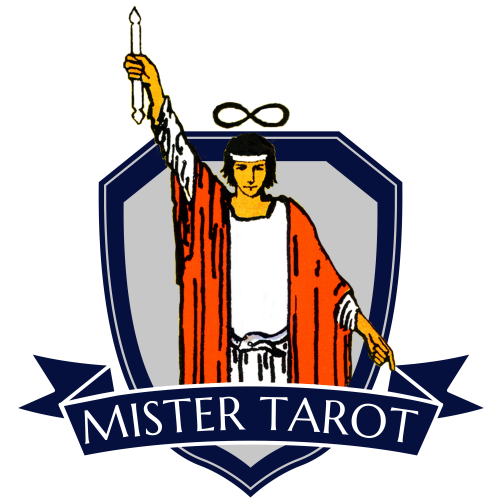While visiting Paris I was given a Rider-Waite deck with French titles on the cards. And from a Tarot point of view, this was fascinating because the manufacturers had used the images from the modern Rider-Waite deck, but they combined them with the titles from the Tarot de Marseille. So, instead of calling The Magician, ‘Le Magicien’, he is termed ‘Le Bateleur’, which has the literal translation of mountebank (a fairground hustler).
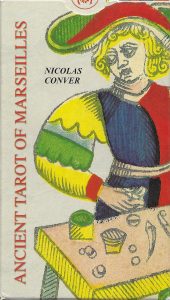 What is the Tarot de Marseille? The cards now known as Tarot de Marseille were given this name in 1889 by the French occultist Papus (Gérard Encausse) in his book ‘Tarot of the Bohemians’. They are called Tarot de Marseille because they came from Marseille, a city in the south of France which was the centre of playing card manufacture in that era. Each Tarot card was originally printed from a woodcut and these outlines were then coloured by hand, or by the use of stencils. The Tarot de Marseille is one of the traditional sets of cards which form the basis of many Tarot decks, including the Rider-Waite.
What is the Tarot de Marseille? The cards now known as Tarot de Marseille were given this name in 1889 by the French occultist Papus (Gérard Encausse) in his book ‘Tarot of the Bohemians’. They are called Tarot de Marseille because they came from Marseille, a city in the south of France which was the centre of playing card manufacture in that era. Each Tarot card was originally printed from a woodcut and these outlines were then coloured by hand, or by the use of stencils. The Tarot de Marseille is one of the traditional sets of cards which form the basis of many Tarot decks, including the Rider-Waite.
The Tarot de Marseille has twenty-two trump cards (Major Arcana) and fifty-six pip cards (Minor Arcana) in the four standard suits of that era: Batons, Coins, Cups, and Swords. The Minor Arcana are only illustrated with the appropriate number of items from that suit. For example, the Three of Cups is shown only as three cups. Neither people nor scenery are depicted in the Minor Arcana of this deck.
The Major Arcana images on the Marseille deck may be familiar to you, because many of them were used as a foundation for the Rider-Waite Tarot. Most of the modern Rider-Waite Tarot cards bear exact title translations from the Marseille deck, for example, The Empress is a direct translation from L’Impératrice, but the following cards had their names changed when A. E. Waite (the designer of the modern Tarot) revamped the images for his deck.
Le Bateleur (Mountebank or Juggler) became The Magician
La Papesse (The Papess, or The Female Pope) became The High Priestess
Le Pape (The Pope) became The Hierophant
And La Maison Dieu (The God House) became The Tower
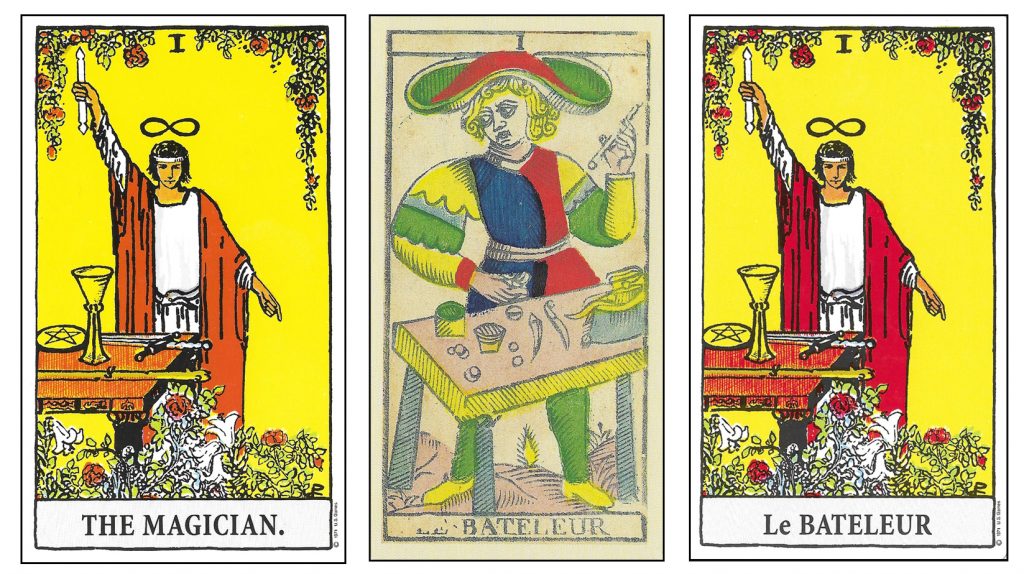
Old Titles / New Titles: In my new French Rider-Waite deck, those titles listed above have reverted to their original labels. The other variation I noticed is with the names of the suits… They retain the Marseille wording Coupes (Cups) and Épées (Swords), but the modern suit of Pentacles has been changed to Deniers, which equates to Coins. Deniers literally means money, but a denier was a medieval coin which was minted in France and Italy in the Middle Ages. The suit of Wands are again known as Bâtons, which usually means sticks, but the translation can be stretched to wands as well. To be precise, a magic wand is normally (and humorously) translated as une baguette magique.
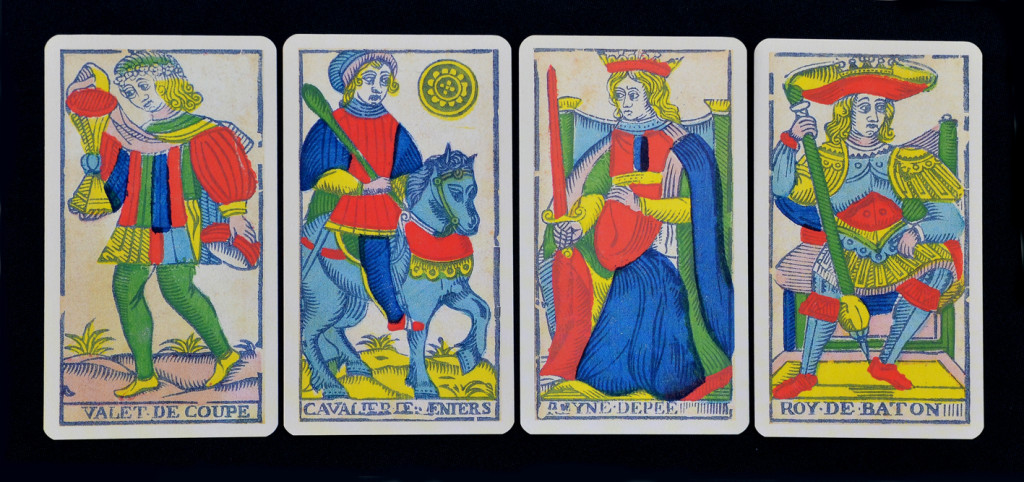
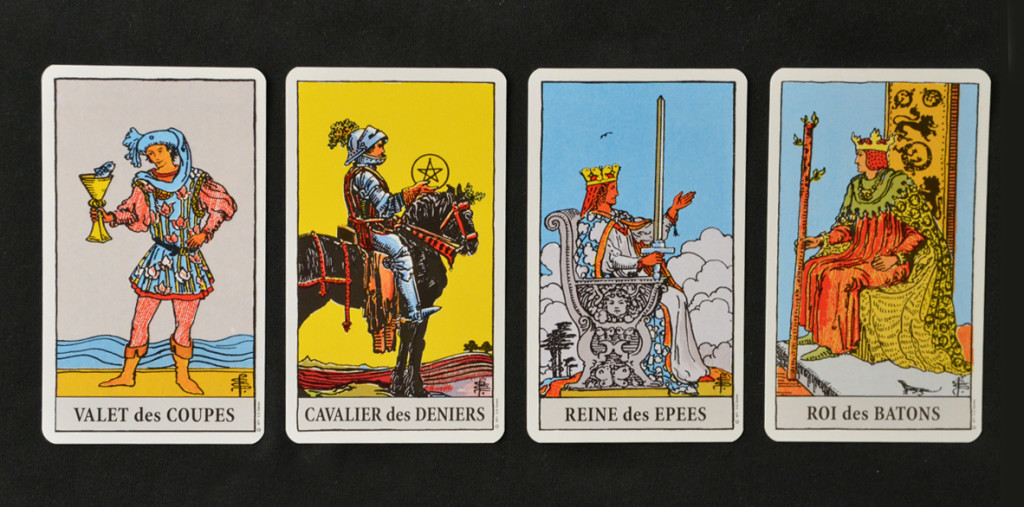
My French Rider-Waite Tarot cards have the imagery of the standard Waite designs, but with French titles taken from a pack created in 1760. It’s a harmonious blend of old and new that links modern Tarot images to its colourful past.
